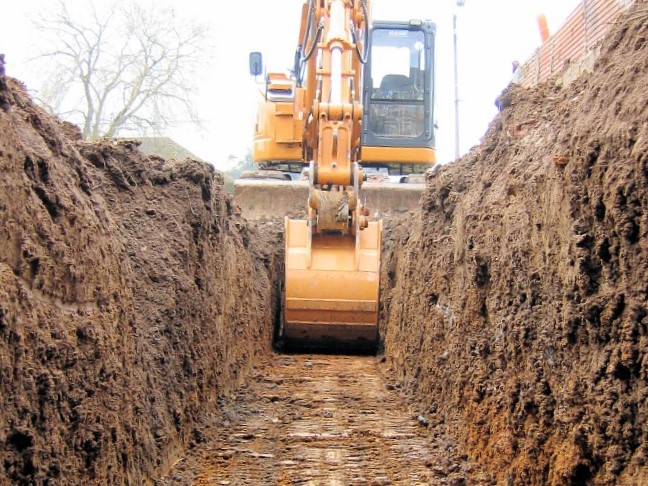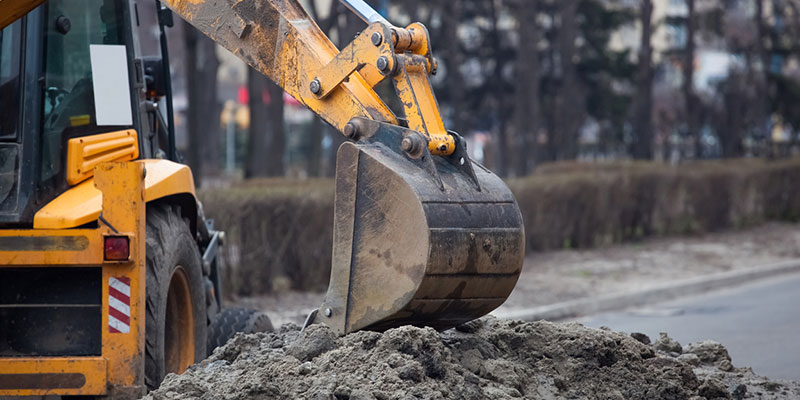Lancaster Excavation - Expert Excavation Providers in Lancaster, OH
Lancaster Excavation - Expert Excavation Providers in Lancaster, OH
Blog Article
Revealing the Art of Excavation: Pro Tips for Safe and Productive Digging
As soil is turned and earth is relocated, the ins and outs of excavation disclose themselves, demanding an eager understanding of devices, soil make-up, safety and security protocols, and environmental considerations. The know-how required to navigate these elements effectively can indicate the distinction in between a successful excavation task and a potential catastrophe.
Value of Correct Equipment
To make certain the safety and performance of any excavation project, making use of the appropriate tools is paramount. The right tools not only improve productivity yet also mitigate risks connected with excavating. Excavation tasks vary in extent and complexity, varying from small domestic landscape design tasks to large-scale construction tasks. Despite the task size, having the right equipment can make a significant difference in the end result.
These flexible equipments come in various dimensions to match different task requirements. Miniature excavators are optimal for smaller tasks, while bigger excavators deal with extra extensive tasks efficiently.
Apart from excavators, various other crucial equipment consists of dump plates, vehicles, and bulldozers. Discard trucks are crucial for removing and carrying excavated materials, while trenchers are used for digging slim and deep trenches. Bulldozers master tasks that call for pushing large quantities of dirt or debris. By investing in the suitable tools, excavation projects can be finished securely, on schedule, and with precision.
Comprehending Dirt Structure
A comprehensive grasp of soil structure is fundamental for carrying out excavation tasks with precision and security. Comprehending the various kinds of dirt is essential as it directly affects excavation techniques, tools selection, and overall task effectiveness.
Silt particles are smaller than sand but bigger than clay, supplying moderate drain and communication. Organic issue, such as rotting plant material, influences soil fertility and stability.
Before starting excavation, carrying out dirt examinations to establish its make-up and features is necessary. This information helps in selecting the proper equipment, implementing safety measures, and creating excavation techniques customized to the details dirt problems - excavating ohio. By comprehending soil structure, excavation professionals can improve job end results while making certain security and adherence to best practices
Safety And Security Steps and Protocols
Recognizing soil structure is the foundation whereupon precaution and procedures for excavation jobs are built, guaranteeing the health of employees and the success of the endeavor. There are a number of crucial actions that need to be implemented to reduce risks and prevent crashes. when it comes to security throughout excavation.
Firstly, prior to any excavating commences, a detailed examination of the site must be performed to determine any type of potential hazards such as below ground utilities, unstable soil conditions, or close-by frameworks that could present a danger. It is vital to have a qualified individual manage the excavation process to make sure that all safety methods are adhered to strictly.
Furthermore, all employees involved in the excavation should be correctly trained in risk-free digging methods and the correct operation of tools. By sticking to these security measures and procedures, excavation projects can be finished effectively and without occurrence.
Reliable Excavation Preparation
When beginning on an excavation task, careful preparation is necessary to make sure efficiency, security, and successful results. Effective excavation planning entails several vital steps that are critical for the smooth execution of the job. The very dump truck companies in ohio first step is to conduct a complete site evaluation to recognize any possible hazards, such as underground utilities or unstable dirt problems. This information is essential for developing a thorough excavation strategy that consists of security procedures and risk mitigation strategies.
When the website analysis is complete, the following action is to produce a clear timeline and schedule for the excavation activities. This consists of identifying the sequence of tasks, tools requirements, and manpower appropriation. Correct scheduling aids stay clear of hold-ups and makes certain that the job remains on track.

Furthermore, interaction among all staff member is extremely important throughout the preparation phase. Clear regulations, routine updates, and efficient coordination are crucial for an effective excavation project. By investing effort and time in meticulous preparation, excavation teams can significantly improve performance, decrease risks, and attain successful end results.

Handling Environmental Considerations
With raising emphasis on environmental sustainability in construction techniques, managing ecological factors to consider has actually ended up being an important facet of excavation jobs. Excavation tasks have the potential to influence the surrounding setting through dirt disintegration, debris runoff, environment disruption, and contamination of water resources. To mitigate these risks, it is important to implement finest practices that prioritize ecological protection.

Additionally, appropriate waste management is critical to avoid dirt and water contamination. Carrying out treatments for the disposal of harmful products, recycling of waste products, and decreasing the use of harmful chemicals can substantially lower the ecological impact of excavation jobs. By integrating these methods into excavation planning and execution, building and construction firms can make sure that their jobs are not only risk-free and productive however also ecologically responsible.
Verdict
In verdict, mastering the art of excavation requires a detailed understanding of correct equipment, soil composition, safety procedures, and effective planning. By complying with these guidelines and taking into consideration environmental aspects, excavations can be performed safely and successfully. It is critical to prioritize security and productivity in every digging task to guarantee effective outcomes.
As soil is turned and earth is moved, the ins and outs of excavation reveal themselves, demanding an eager understanding of devices, dirt make-up, safety protocols, and environmental factors to consider.To ensure the safety and security and efficiency of any type of excavation task, making use of the suitable equipment is critical.A detailed grasp of soil composition is fundamental for executing excavation tasks with precision and safety. Comprehending the different kinds of soil is important as it directly impacts excavation approaches, devices choice, and general job performance. By comprehending soil structure, excavation experts can enhance task outcomes while guaranteeing safety and security and adherence to ideal practices.
Report this page